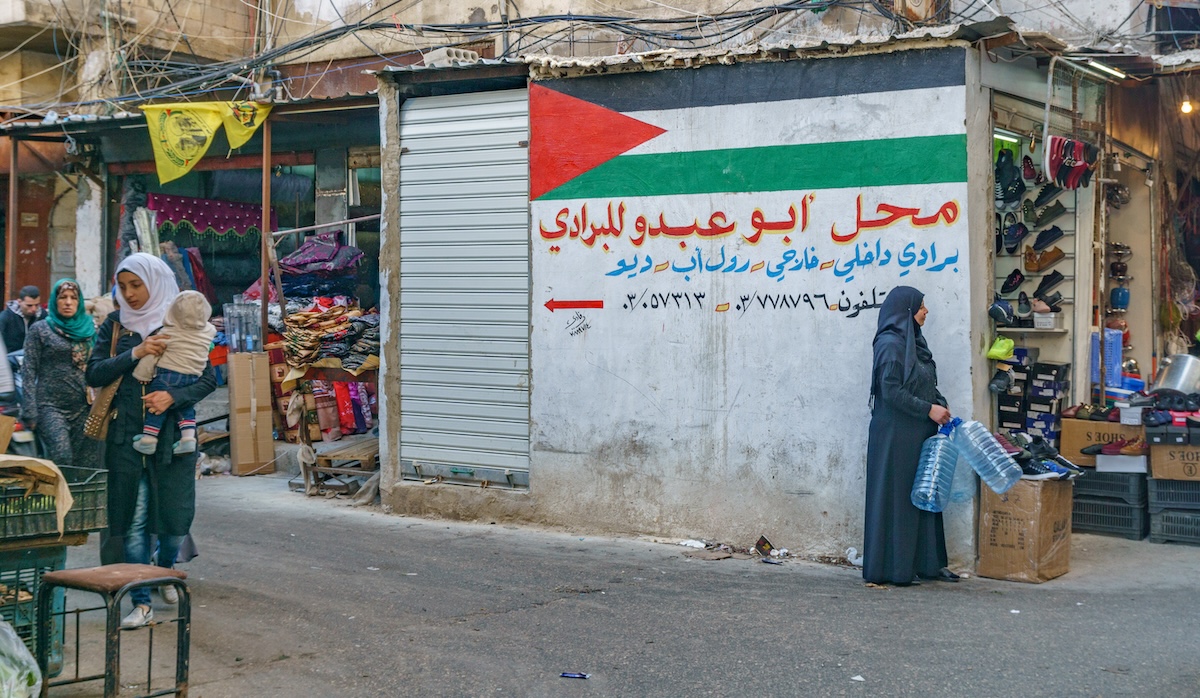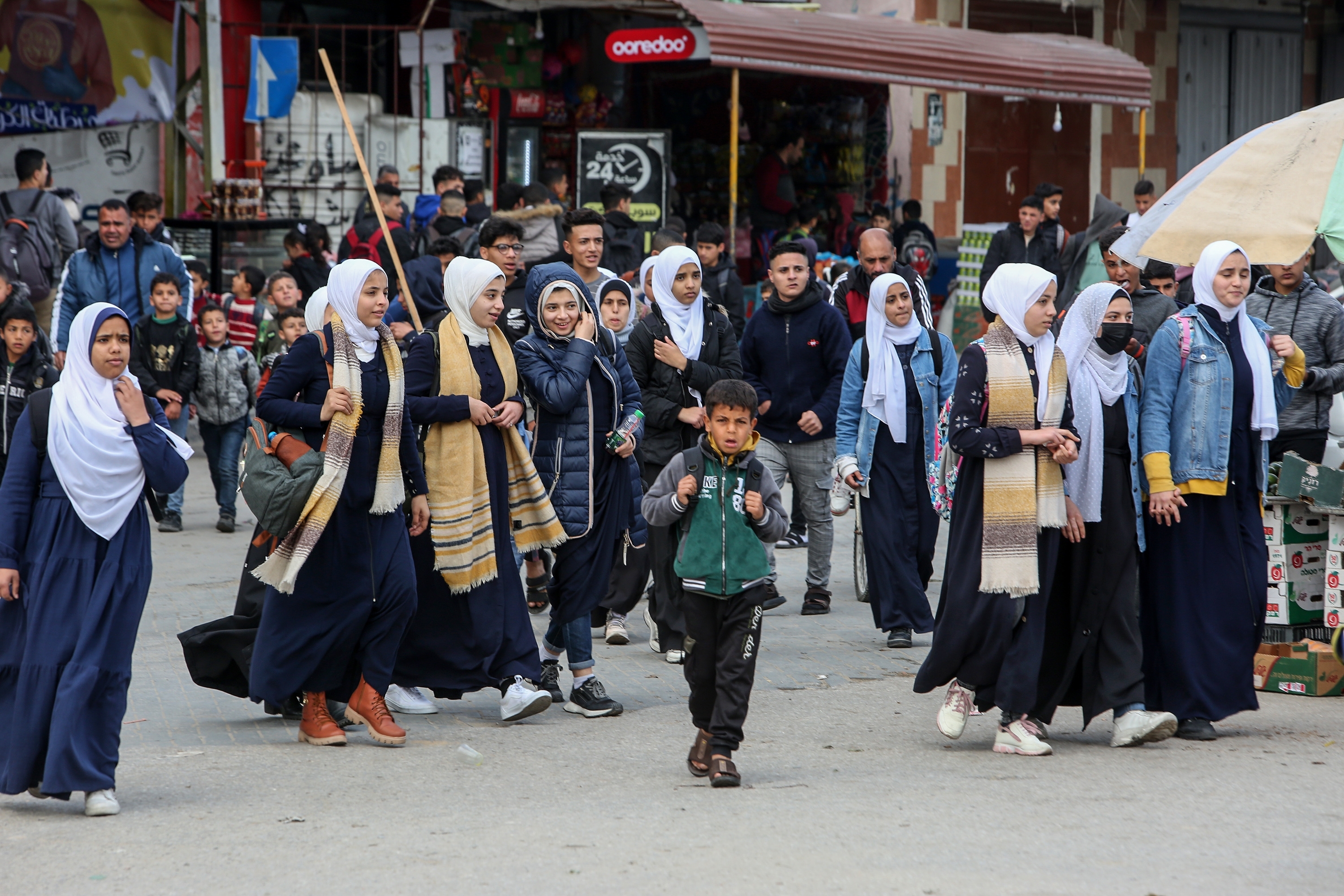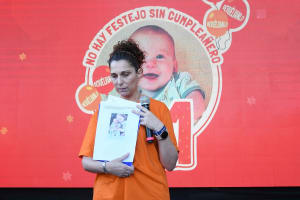What are Palestinian 'refugee camps' and why do they exist in Palestinian territory?

The existence of Palestinian refugee camps within the Palestinian-ruled territories can be confusing to those unfamiliar with the Arab-Israeli conflict. How can Palestinians be refugees in their own territory?
In reality, the history of the Palestinian refugees and the refugee camps both within and outside of the territory of Israel is a difficult one, complicated by competing interests, which often prioritize geo-political concerns over the welfare of the Arabs who settled in the refugee camps.
The 1947 UN Partition Plan
The history of Palestinian refugee camps begins with the 1948 Arab-Israeli War, known to Israelis as the War for Independence, and which Palestinians later came to call the Nakba or “catastrophe.” [This term was originally applied to the Arab armies’ failure to defeat the Jews, and only later applied to the flight of Arabs and the resulting loss of their homes.]
The conflict began after the UN Partition Plan of 1947, which proposed dividing British Mandatory Palestine into Jewish and Arab states. At that time, the term 'Palestinian' primarily referred to Jewish residents; while Arabs in the region generally identified as “Arab.”
Arabs leaders rejected UN Resolution 181, while the Jewish leaders accepted, despite the new territory being even less than originally proposed by the League of Nations.
Even before Israel declared its independence in May 1948, Arab leaders urged Arabs within the proposed Jewish state to flee, promising a swift victory and soon return of the Arabs to their homes.
Arab nationalist Aref el-Aref, in his history of the 1948 war, said, “The Arabs thought they would win in less than the twinkling of an eye and that it would take no more than a day or two from the time the Arab armies crossed the border until all the colonies were conquered and the enemy would throw down his arms and cast himself on their mercy.”
Even before the outbreak of war, thousands of Arabs began to flee Arab neighborhoods in the Jewish partition. Following the announcement of the Partition Plan, around 30,000 wealthy Arabs left for neighboring Arab countries, fearing the outbreak of hostilities. Poorer Arab families fled to stay with families in the eastern part of the territory (Judea and Samaria). By January 1948, the flight of Arabs was so alarming that the Palestine Arab Higher Committee asked neighboring Arab countries to refuse visas or entry to these refugees.
After the outbreak of hostilities, despite an official invitation by the fledgling Israeli government asking the Arabs to remain “on the basis of full and equal citizenship and due representation in all its bodies and institutions," thousands fled out of fear of mistreatment. Thousands more were displaced from their homes, either by the fighting, or by threats from Jewish militia groups who ignored the official policy to welcome any Arabs wishing to remain.
Establishment of the camps and the creation of UNRWA
The Arab refugees who fled their homes spread out into the surrounding countries of Lebanon, Syria, Jordan, and Gaza (then under Egyptian control), with many also staying in the Jordanian-controlled territories of Judea and Samaria.
The United Nations Relief and Works Agency for Palestine Refugees in the Near East (UNRWA) was established in December 1949, as a means to provide relief and support to these refugees, most of whom found themselves unable to return due to the defeat of the Arab armies. UNRWA began operations in May 1950.
UNRWA set up camps in Gaza and the territory Jordan called the "West Bank," to accommodate those who had fled or were expelled during the war.
Initially, these camps were meant to be temporary, providing shelter, food, and basic services like education and health care until a permanent solution could be found for the Arab refugees. Eight camps were established in Egyptian-controlled Gaza, and in the Jordanian-controlled West Bank, 19 official camps were set up to house the refugees.
While the exact number is disputed, census results before and after the war indicate that around 650,000-700,000 Arabs fled before and during the first Arab-Israeli war. (A UN report from 1948 estimated that only around 360,000 fled.) While many of them fled at the encouragement of the surrounding Arab states, those refugees found no help from most of those states following the end of the war.
With the exception of Jordan, which granted citizenship to some Arab refugees, all other Arab countries that took in those refugees, refused to grant them permanent residency or citizenship, often confining them to the refugee camps where they had settled temporarily during the conflict.
Former Syrian Prime Minister Haled al-Azm stated in his memoirs: “Since 1948 we have been demanding the return of the refugees to their homes. But we, ourselves, are the ones who encouraged them to leave. Only a few months separated our call to them to leave and our appeal to the UN to resolve on their return.”

UNRWA and the Palestinian refugee status
While UNRWA initially sought permanent resettlement for some of the Arab refugees, after pressure from the Arab League, and later the PLO, UNRWA dropped that aspect of its work, even resisting attempts to construct permanent cities and towns for the refugees, which Israel tried to do between the late 1960s until the outbreak of the First Intifada.
The situation of the Arabs displaced from their homes due to the Arab-Israeli conflict highlights part of the problem with the UNRWA mandate.
While UNHCR, the United Nations High Commissioner for Refugees, which handles most refugee situations globally, seeks to permanently resettle refugees quickly, UNRWA's mandate is specifically for Palestinian refugees and does not include resettlement. This has created a unique situation where Palestinian refugees remain in camps for generations.
UNRWA argues that it cannot resettle refugees, because its mandate is only to assist and protect Palestinians “pending a just and lasting solution to their plight.”
UNRWA does not directly administer the refugee camps, claiming these are the responsibility of the host country but it has resisted attempts by Israel to resettle the refugees even with Palestinian territory.
The refugee camps and Palestinian terror groups
The refusal of UNRWA and the Arab authorities to allow the permanent resettlement of Arab refugees from Mandatory Palestine has caused the refugee camps to be a breeding ground for terrorism.
The founders of several Palestinian terror groups grew up in UNRWA refugee camps, and the First Intifada was started in the Jabaliya refugee camp.
For terror groups like Fatah, the Popular Front for the Liberation of Palestine (PFLP), and Hamas, the camps provided fertile ground for disseminating radical ideas, and finding willing recruits, many of whom were prevented by Palestinian and Israeli policies from finding viable economic opportunities.
Education in the camps was provided by UNRWA, which usually relied on local volunteers and workers, a significant minority of whom were active members of terror groups. These UNRWA schools often used inflammatory and inciting curricula, which praised struggle and martyrdom while denying the right of Israel to exist.
Additionally, in Gaza, Judea and Samaria, and other countries like Lebanon, groups like Hamas and Fatah have effectively governed parts of camps, functioning as an alternative to official governance structures, and exercising significant control over local politics and community life. The outsize presence of terror groups in the camps has also led to a higher number of Israeli security and counter-terror raids within those communities, further fueling a cycle of aggression.

Conclusion
The Palestinian refugee camps in Judea and Samaria and in Gaza are emblematic of the ongoing Arab-Israeli conflict and the unresolved question of the purpose of the UNRWA refugee agency, which was not created to solve the refugee crisis.
The decision by the UN (Resolution 194) not to allow Palestinian resettlement was driven by the political commitment to the Palestinian “right of return” and Arab concerns about the political legitimacy of Israel and its role in the Middle East.
The continued presence of the camps has provided the Arab states with an ongoing basis for accusing Israel of mistreating the Palestinians while ignoring their own complicity in maintaining the situation through policies denying the Palestinians opportunities to emigrate or integrate.
Until the perpetual Palestinian refugee status, and the purposely separate and distinct nature of the refugee camps are dealt with, they will continue to remain a hindrance to the Arab-Israeli peace process.

J. Micah Hancock is a current Master’s student at the Hebrew University, pursuing a degree in Jewish History. Previously, he studied Biblical studies and journalism in his B.A. in the United States. He joined All Israel News as a reporter in 2022, and currently lives near Jerusalem with his wife and children.













